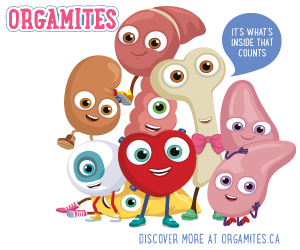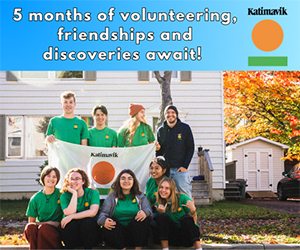The world can be a frightening place. News reports tend to paint a vivid picture of all the things that are going wrong in society. Educators are often left to fight hard to present matters in a more optimistic light—to make the school and classroom experience as positive as it can possibly be for their students.
However, there are times when educators need to be cognizant of the existence of issues that are both scary and dangerous. And when these issues arise, school leaders need to open their eyes to the negative and, instead of closing the classroom door and denying that problems exist, confront these issues head on. This takes both insight and courage.
The following are large in scope. What interventions are appropriate if a guidance counsellor suspects gang affiliation, drug trafficking, or human trafficking within the school community? How should they respond? Who should they consult to help tackle the problem? What are the warning signs to look for? As frontline staff, the guidance counsellor may be the first to observe that something is amiss before a larger issue is uncovered.
The goal of this article and its content is to be informative and to shed light on these realities. For some readers, however, there is a strong likelihood that they have already had to deal with such situations or will have to in the future. These issues quickly leave the realm of the guidance office before they are handled by the school administration and the police. All involve recruitment by bad actors, manipulation to perform certain tasks, and difficulty for the recruit to escape those who brought them into their web. Gang recruitment, drug trafficking and human trafficking also exist beyond the school with their tentacles extending in from the community at large.
Gangs
The Canadian Police Survey on Youth Gangs estimates that approximately 7,000 youth are members of over 400 gangs across the country. Almost half of these gang members are under the age of 18 which puts many of these youth in high school. One of the best ways to determine if a school community is susceptible to gang activity is to liaise with law enforcement to see if there are gangs active in local neighbourhoods. Odds are, if the community has a gang issue, the school has a gang presence.
Even with this knowledge, there is still a great deal of denial by educators that gang members walk the corridors of their schools. One U.S. study found that four out of five principals deny that gangs are in their schools despite proven gang participation rates of close to 15% among the student population. This statistic indicates either a stunning lack of awareness or an unwillingness to face the facts.
Counsellors may hear rumours that students belong to a gang, or they may see signs of gang involvement. Here are a few things to look out for:
- Groups of students wearing the same colour clothes or common clothing items—like bandanas, belts or belt buckles, jewelry, or team sports clothing. If a group of students are dressing the same, it is a good idea to be mindful of the activities of that group.
- Distinctive tattoos, graffiti, and unique/common drawings on things like notebooks or assignments. Gang imagery can often involve depictions of area codes and neighbourhood or street names.
- Gang members often use hand signs, handshakes, and other signals to indicate affiliation with a certain group.
The key is to be observant even if the outcome of the observation process is that the student(s) a counsellor is monitoring are not involved in a gang.
As a rule, gang members don’t really fly below the radar. Teacher’s might notice poor school attendance or performance. Parents might report a change in behaviour, unexplained sources of income or possessions, breaking of curfew, and defiance of the rules of the house. If, in the end, it is concluded that a student has joined a youth gang, it is important for the guidance counsellor to partner with the student’s parents, the school administration, the school social worker and child youth worker, and local law enforcement to see what strategies can be employed to help keep the school and the student safe.
Often gang quarrels existing outside of school will make their way into the school. This is the type of thing that schools must keep at bay to protect the safety and sanctity of the learning environment that they are charged with protecting. Many experts believe this is accomplished by proactively addressing the issue by preventing gang recruitment, intervening to see if school support can help a student disengage from gang involvement, and suppressing gang activities that may bring harm to the community. An approach like this involves all partners working together with school safety as the prime directive.
Drug Trafficking
There is no question that drug use among students is a problem. The top five substances used by youth are:
- alcohol (71.5%)
- marijuana (25.1%)
- hallucinogens (4.6%)
- ecstasy/MDMA (3.8%)
- cocaine (2.7%)
Source: Canadian Alcohol and Drug Use Monitoring Survey (CADUMS)
With drug use numbers like these, there is no wonder that one in five youth report being offered drugs at school and having seen drugs being sold in their neighbourhoods.
Suffice to say, drug trafficking is an ongoing problem in our schools. High level drug traffickers have several factors working in their favour. Recruitment of school drug dealers can be relatively straight forward given the emotional maturity of many adolescents and their intense desire to fit in with their peer group. Recruiters target anyone from the tough kid looking to make their mark to the meek kid hoping to get noticed. Adolescents are notorious for both taking risks and showing a shocking lack of concern for consequences. An interesting side note, gangs are often behind the drug trade in schools and use their network to recruit potential dealers.
In a recent Global News report (August 2023), a drug dealer described how he got pulled into the racket. Older students offered him free nicotine-based vape. He thought this was both generous and cool. When he was hooked on nicotine, and couldn’t pay for more vape, they recruited him to sell all manner of drugs to fellow students. According to ‘Steve’ (not his real name), if administrators are wondering why weapons and fights are finding their way into schools, they need look no further than the drug trade in many cases. In the end, Steve broke away from the drug traffickers and now works as a youth counsellor.
If a Guidance Counsellor becomes aware that a student is trafficking drugs, they will follow the same process as they would with a suspected gang member: they would notify the entire school team, the parents, and bring in law enforcement for consultation and, if necessary, action. The goal would be to support the student if they have a sincere desire to disengage from drug dealing. If they are unwilling, steps need to be taken to protect the school community.
Human trafficking
Human trafficking is considered one of the fastest growing criminal activities in the world. Human trafficking is the recruitment, transportation, harbouring, and control of an individual in order to exploit them for the benefit of the trafficker and/or the trafficking network. The most common forms of human trafficking are sexual exploitation (forcing a person into the sex trade) and slave labour (forcing someone to work without pay). A staggering 95% of victims are women and 22% of these victims are under the age of 18. Most people pulled into the orbit of a human trafficker know the recruiter. Many others report being helped out of a tough spot by a seemingly caring person who, in turn, forced their victims into a world from which the odds of escape are so low that many choose to take their own lives rather than seek help from the authorities.
Experts call human trafficking a hidden crime because it often happens in plain sight. Many people work alongside victims who have been forced into slave labour or unwittingly do business with companies whose workforce is composed of slave labourers. Meanwhile, those compelled to work in the sex trade become so vulnerable and terrified of the harm threatened by their trafficker that they conclude that obedience and silence are their only option.
Victims of this insidious crime are more likely to be psychological prisoners to their captors than physically bound prisoners. The coercion—social, mental, and financial—is so ingrained that, in many cases, the victims attend school, go to work, and roam freely. This is accomplished through a process of recruitment (which can take place in the community, in a school setting, or online through social media), grooming (to the point of indoctrination), and exploitation that victims describe as being all encompassing and terrifying.
If 22% of human trafficking victims are under the age of 18, and the vast majority are female, guidance counsellors should be keeping an eye on vulnerable girls in the school community. Sex trafficking experts say that recruits tend to be:
- female, often girls, with 2SLGBTQ+ seen as specific targets.
- Indigenous and racialized females.
- Youth with a history of physical and sexual abuse.
- Youth living in foster care.
- Homeless youth.
- Youth with low self-esteem who are seeking a sense of belonging.
Source: Ontario Ministry of Children, Community, and Social Services, 2021
Many provinces have established guidelines for schools dealing with the identification and reporting of human trafficking to school boards and law enforcement. In Ontario, each school board is required to create an anti-sex trafficking protocol for staff that outlines the steps to be taken if a student has fallen victim to this crime. The Ministry of Education has allocated money for training of staff so that they can identify potential victims.
In term of spotting students who may be victims of sex trafficking, here are a few things for guidance counsellors to look out for:
- Withdrawal from family and friends.
- Becoming secretive.
- Not disclosing where they are getting money or gifts.
- Poor school attendance and declining school performance.
- The sudden presence of a new, older friend.
- A second cell phone whose number is secret.
- Signs of physical and/or mental abuse.
While many of these characteristics could indicate that a student is ‘at risk,’ they could also be red flags that something nefarious is happening.
Final thoughts
Overall, it is important for school communities to avoid burying their heads in the sand and deny that their school might be susceptible to gang infiltration, drug trafficking and human trafficking. Ignoring a potential problem may lead to a situation where unaddressed issues grow into extremely difficult and burdensome problems for the school community. From a guidance counsellor perspective, keeping a lookout and being aware of vulnerable students and potential problems can go a long way to helping keep a school safe. It is also what guidance counsellors do instinctively. Once these instincts kick in, counsellors can feel comforted in knowing that there is a team of people—parents, support workers, the administration, and law enforcement—that will band together to do what is best for students and the school community.
Guidance counsellors would be well advised to explore the policies, procedures, and protocols put in place by their school board on issues like gangs, drugs, and human trafficking. While these vary from province to province, many outstanding resources exist that can help counsellors address these issues.
By: Sean Dolan









